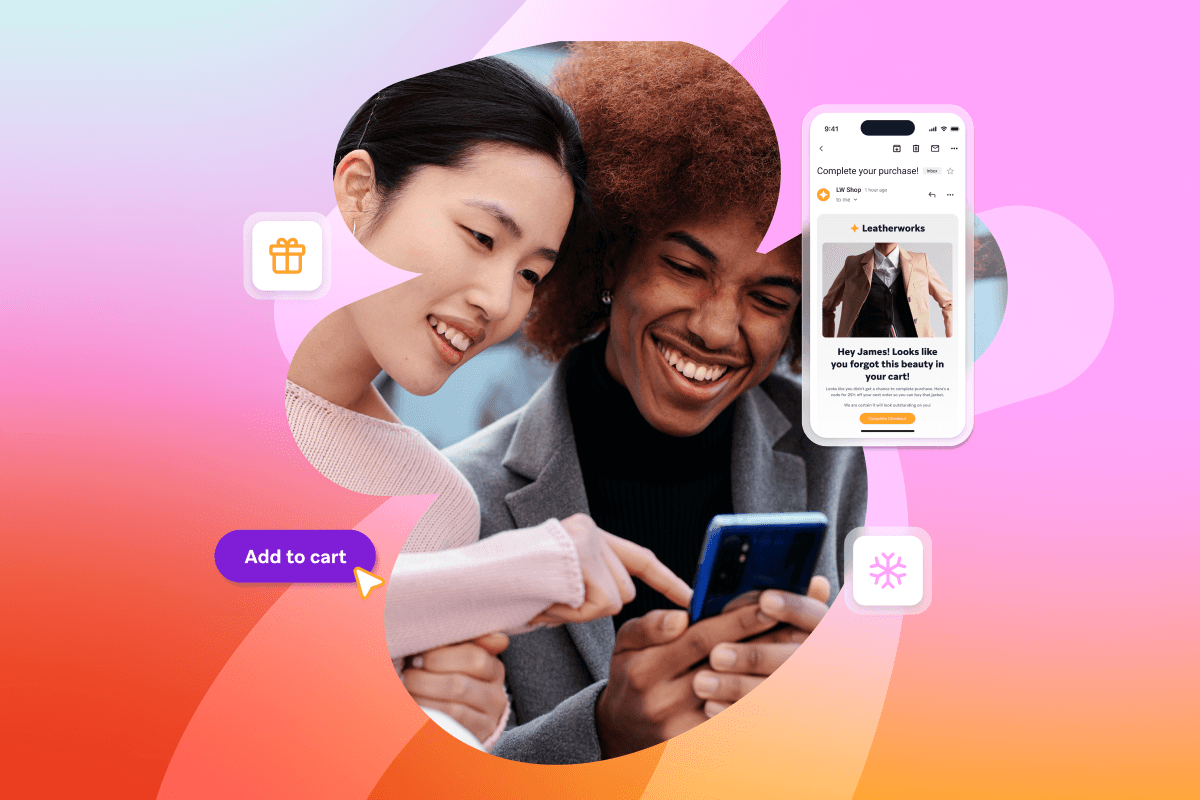4 Predictions for the Future of Interactive Mobile Experiences
Published on January 27, 2016/Last edited on January 27, 2016/6 min read


Team Braze
When you think about interactive mobile experiences, what comes to mind? Playing Lifeline on the way home from work? Sending a SnapChat? Taking a BuzzFeed quiz while you wait in line at the grocery store?
While each of these activities involves some level of interactivity, the potential for truly immersive content is vastly greater. Brands are just beginning to invest in developing interactive mobile experiences—content that invites the end user to actively participate in the story being told. And today’s technology just barely scratches the surface of what mobile technology will become in a few years.
How will these innovations impact mobile content consumption behaviors—and content creation standards for brands and publishers—in the near future? Here are my four predictions based on the interactive content I’ve seen created at Ceros and my own nerdy research.
1. Experiences will go mobile-native

Source: Ceros Blog
Although many brands are creating interactive experiences with smaller screens in mind, the vast majority provide the same content on desktop and on mobile. As mobile adoption continues to surge—analysts project that the number of smartphone users worldwide will surpass 2 billion in 2016—the approach to interactive content will start to shift from mobile-friendly to mobile-native.
In this context, mobile-native means that the story and user experience will be designed for smartphone and tablet users. This goes beyond the typical design and navigation changes brands are currently implementing to make their interactive content readable and functional on smaller screens. Along with cosmetic changes, the narrative content, flow of information, and way of exploring experiences will be tailored to mobile user preferences and behaviors.
For example, the image above shows an interactive guide that’s been designed with mobile in mind. It’s a long-scroll piece that taps into mobile users’ preferences for scrollable rather than multi-page content. The tiles are easy to tap on small screens, and the amount of information provided about each vendor is short and snackable.
Marketing campaigns will also continue to become more tailored to mobile user behaviors to take advantage of consumer preferences–from the channels being used to the messaging and content in the experience.
2. Content recommendations will happen via proactive push

Imagine a world where, instead of using search engines, social networks, and other channels to discover new content, content was served directly to you at an opportune moment. The technology already exists to send push notifications to your mobile device. Most brands are using push messages for real-time advertising, but the next logical step is to use the same technology to deliver valuable, non-promotional content to your audience.
As an example, imagine you booked a flight to a city you’ve never visited before. Currently, you’ll get a push notification from your airline to let you know your flight status the day of your trip. But what if the airline then followed up an hour before your flight, when they know you’ll be sitting in the airport waiting to board, with an interactive visitor’s guide? This sounds a lot more convenient than googling travel sites on your phone, and the content would be a lot more engaging than simply reading a travel guide. This kind of hyper-targeting a campaign isn’t just wishful thinking—all you’d need is geolocation data and flight data to serve up the right content to the right people at the right time.
This is the future of mobile interactive experiences: content that’s served in real time, tailored to user preferences and behaviors. I can’t wait to see it in action!
3. Mobile content will become more personalized

Source: Apple News
One-size-fits-all content will increasingly become a thing of the past as brands find new ways to track and use mobile user data. Today, syndication apps like Apple News allow users to personalize their content feeds based on topical and publisher preferences; Google News also serves content based on geographic region and past searches.
As brands become even more skilled at tapping into mobile user data in the future, they’ll be able to personalize their interactive content to tap into demographic, geographic, firmographic, and behavioral characteristics to provide a super relevant and engaging experience on any and every device. Campaign marketers will need to partner closely with content creators to figure out the best content to serve to mobile users based on all of the available data.
4. AR and VR experiences will grow in popularity

Source: Microsoft
Augmented Reality (AR) and Virtual Reality (VR) are much more than just technological novelties. Google just launched a dedicated VR division, and other mega-corporations like Microsoft, Facebook, GoPro, and GE have been investing heavily in devices and apps for AR and VR experiences over the past few years.
The interactive mobile content of the future will evolve radically as these new technologies gain widespread adoption among consumers and businesses. Content creators and marketers will no longer be limited to two dimensions—they’ll be able to deliver fully immersive, interactive experiences to consumers all over the world. Digital storytelling will change into something we can only just begin to imagine at this point in time, and marketing campaigns will need to be reimagined for entirely new distribution channels.
Here are a few intriguing VR and AR projects that foreshadow what’s to come for “mobile” interactive experiences:
Virtual reality video
In fall 2015, video giant YouTube launched full support of VR videos; Google also partnered with GoPro to launch its 360-degree video rig, Jump.
“Welcome”, a virtual reality music video from Fort Minor, was one of the first VR videos launched after YouTube’s update.
You can mouse around the video for a 360-degree view of the boardwalk, the beach, passersby, and lyricist Mike Shinoda.
Virtual reality gaming
Video game developers have been some of the most enthusiastic early adopters of virtual reality technology. On the less sophisticated end of the spectrum, Google’s Cardboard VR viewer made waves when it debuted at I/O in 2014. Developers have been creating and launching mobile apps for the viewer since its release. Cardboard’s price point makes it an affordable option for any Android user to invest in.
On the more sophisticated end of the spectrum, Facebook’s Oculus Rift headset is finally shipping in March 2016 after much hype. The device will support highly sophisticated VR gaming experiences, as well as VR video, chat, and more.
Augmented reality devices
Augmented reality devices have been slower to gain traction. Google Glass was the first big player in the field, but failed to gain a serious foothold with consumers. The big player on the horizon is Microsoft’s HoloLens, which appears to be Iron Man-style holograms brought to life. If Microsoft can deliver on the compelling advertising they’ve released so far about the device, it has the potential to revolutionize the way consumers and corporations share virtual stories and create in real life.
The bottom line
Using the technology we have at our disposal today, interactive mobile experiences will undergo a drastic transformation. As digital storytellers and marketers begin to tap into mobile-native formats, personalized content, push content, and AR/VR devices, the way we connect with our audiences will change.
What won’t change? The power of a relevant, engaging story delivered to the right audience in a timely fashion. The methods we content creators use to achieve this goal will change countless times over the course of our careers, but the goal will fortunately remain the same.
Be Absolutely Engaging.™
Sign up for regular updates from Braze.
Related Content
View the Blog
Holiday Email Deliverability: Tips and Tricks from Braze Experts

Team Braze

Destination Inbox: Navigating the Modern Landscape of Email Deliverability

Alison Gootee

Know Your Push: Understanding the Different Push Notification Devices and How to Use Each Effectively
